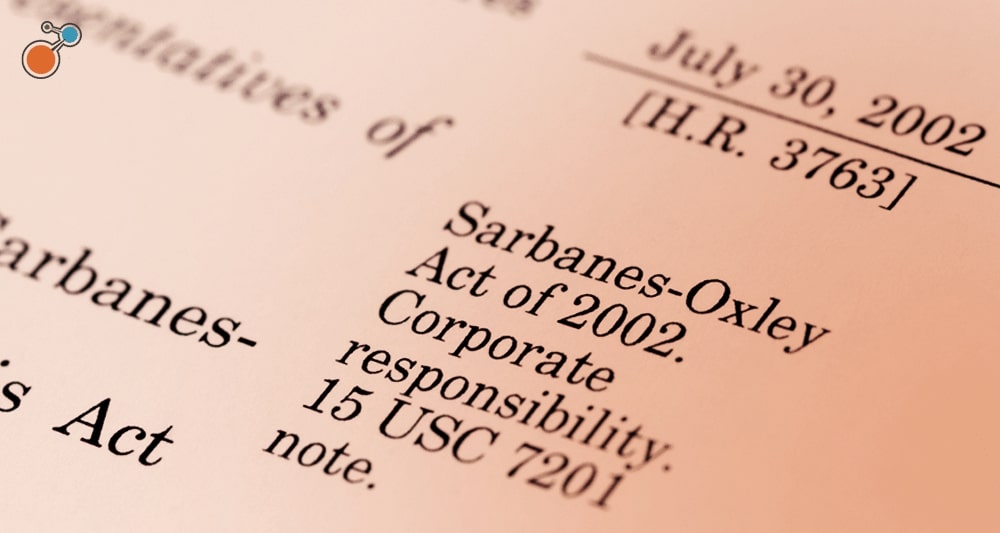The Sarbanes-Oxley Act of 2002 – known as SOX – has been operational for almost two decades, yet many businesses continue to struggle with compliance. To be sure, SOX compliance is a sizable undertaking. However, done right, the process will yield valuable insight that can give your organization a competitive advantage.
What is SOX?
Sarbanes-Oxley emerged from a run of corporate financial scandals. Big-name companies like WorldCom, Tyco, and Enron, fraudulently inflated and misrepresented financial records, costing investors billions when stock prices collapsed.
The scandals exposed prolonged fast-and-loose financial reporting and entrenched dishonesty. Financial statements were fraught with falsified records. In some cases, records were hidden entirely from auditors. Some companies lacked any internal controls, leading to gross mismanagement and misconduct. GRC – Governance, Risk, and Compliance – was virtually nonexistent.
And that led to the creation of SOX. SOX aims to combat fraud, improve reliability of financial reporting, and restore investor confidence. It requires strict internal controls over financial data, reporting and disclosures to investors, as well as clear accountability.
The law also established penalties – hefty ones at that – for executives and boards that mismanage or tamper with financial reports. The law also created the Public Company Accounting Oversight Board (PCAOB) to oversee firms that conduct audits.
Who Must Comply with SOX?
SOX compliance applies to all publicly traded companies in the U.S. and wholly owned subsidiaries. Publicly traded foreign companies must also comply if they do business in the U.S. Accounting firms that audit these companies are under the jurisdiction of SOX. Any private company planning an Initial Public Offering (IPO) will need to prepare to comply with SOX before going public.
Companies subject to SOX must have a SOX-compliant audit every year.
Why is SOX Compliance Important to Your Business?
The Sarbanes-Oxley Act is a United States federal legislation and compliance is not optional for public firms.
And the law has teeth: noncompliance can result in hefty fines and imprisonment – up to $10 million and 30 years, respectively. If ineffective controls contribute to the incorrect restatement of financial statements, shareholders also will almost certainly bring civil lawsuits against the firm.
While avoiding these severe penalties is a strong motivator in and of itself, complying with SOX can bring significant benefits to the organization. Robust controls reduce the likelihood of financial fraud and other suspicious activity by employees or other stakeholders. That in turn, generates a greater sense of confidence from the public in your company’s financial statements.
Overview of SOX Compliance Requirements
- Financial Reporting – Companies must provide periodic financial statements certified by independent auditors. They also must promptly disclose any material changes to their financial situation to the public.
- Internal Controls – Companies must have internal controls signed off by independent auditors, to prevent fraud and ensure the integrity of financial information.
- CEO/CFO Personal Responsibility – Principal executives and financial officers are required to provide a statement to certify that the management assessment audit report does not contain any untrue statements of fact or misleading omissions.
- Data Security — Companies must ensure they have methods in place to locate sensitive data, see who has access to it, and monitor user interactions. If an incident occurs, companies must have the means to take immediate action and remediate the issue as quickly as possible.
- Access Controls – Companies must limit access to sensitive financial information to the right people with physical and electronic controls, including password policies and more.
- Data Backup – Policies must be in place to minimize loss of data in the event of an incident.
- Change-Management Controls – Records must be maintained whenever a change in IT environment occurs, including new employees, new computers, and software updates.
How to Facilitate Compliance with the Right Compliance Software
Technology can automate the tedious but critical details of SOX compliance that could be otherwise overlooked. Investing in SOX compliance software tools can eliminate duplication of effort and establish one source of truth across the organization.
Ideally, one would want an integrated, easy-to-use platform that can manage corporate compliance and regulatory requirements, internal controls, documentation, and required reporting. The best solutions seamlessly integrate compliance, internal audit, and other risk management functions.
Advanced compliance software simplifies SOX compliance by:
- Standardizing processes, streamlining data collection, and enforcing security
- Automating routine tasks to free compliance teams from manually collecting data to do higher-value work like investigating and remediating issues in a timelier manner
- Analyzing data to bring you fresh, data-driven insights, show interdependencies that would otherwise go unnoticed, and provide you an early peek at risk indicators
- Visualizing key indicators and metrics in real-time so you have the whole, most up-to-date story within your data for better, faster decisions
Integrated SOX compliance software helps you get more done, deliver better results — and prove it. You’ll always have ready-to-go data easily on hand so you can close compliance gaps before it’s too late.
Complying with SOX can be daunting, but the advantages extend well beyond avoiding costly penalties. SOX compliance – facilitated by advanced compliance software – can give you better information about operations to expose weaknesses and gaps, avoid bad decisions, and protect your organization.
For more on streamlining compliance, download our e-book, Transforming Compliance from Check-the-Box to Champion, and learn about Riskonnect’s compliance solution.




